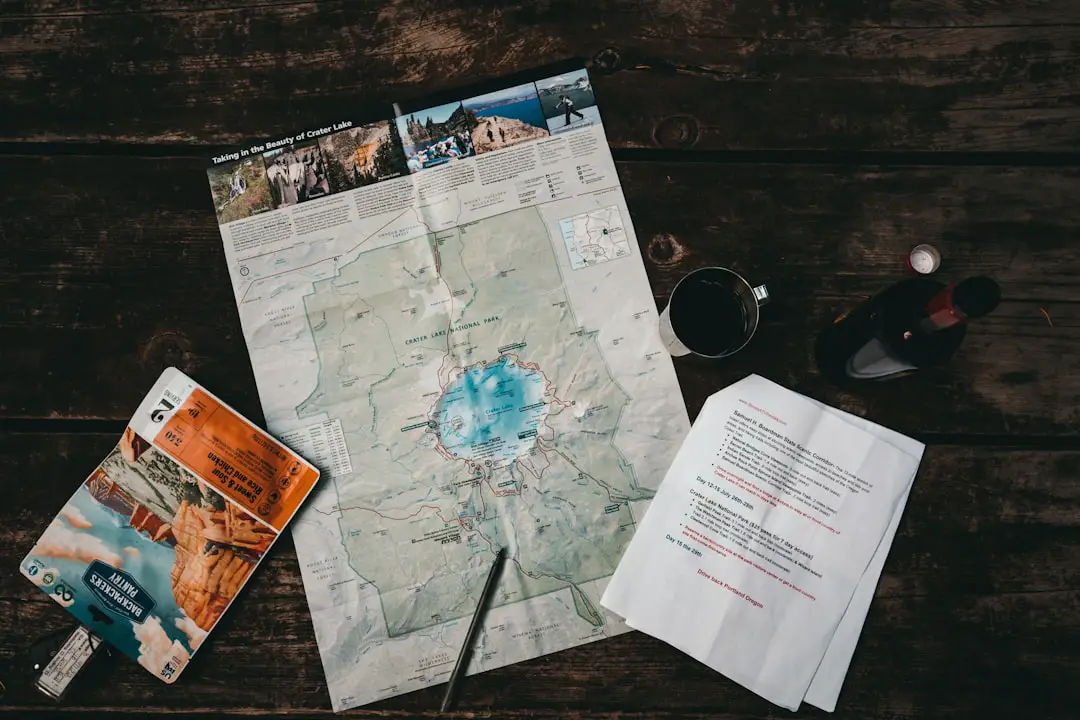When embarking on a hiking adventure, one of the first considerations is the terrain and its associated difficulty levels. Trails can vary significantly in their characteristics, ranging from flat, well-maintained paths to rugged, steep inclines that challenge even seasoned hikers. Understanding these variations is crucial for planning a successful hike.
For instance, a trail classified as “easy” may feature gentle slopes and a smooth surface, making it accessible for families with children or those new to hiking. In contrast, a “difficult” trail may include rocky outcrops, narrow paths, and significant elevation changes that require advanced skills and physical endurance. The classification of trails often relies on several factors, including the type of surface, the steepness of the ascent, and the overall length of the hike.
For example, a trail that is primarily dirt with minimal rocks may be rated as moderate, while a similar length trail that includes boulders and steep drop-offs could be rated as difficult.
This information can be invaluable for hikers looking to match their skills and experience with an appropriate trail.
Key Takeaways
- Understanding terrain and difficulty levels is crucial for planning a successful hike
- Factoring in elevation gain and loss helps in estimating the physical challenge of the hike
- Considering your fitness level is important for choosing a hike that is suitable for you
- Accounting for rest and snack breaks is essential for maintaining energy levels during the hike
- Researching trail conditions and weather is necessary for being prepared for any challenges or changes during the hike
Factoring in Elevation Gain and Loss
Elevation gain and loss are critical components in assessing the overall difficulty of a hike. Elevation gain refers to the total vertical distance climbed during the hike, while elevation loss indicates how much altitude is lost when descending. These factors can significantly impact the physical demands placed on hikers.
For instance, a trail that gains 1,000 feet over a short distance can be much more strenuous than a longer trail with the same elevation gain spread out over several miles. When planning a hike, it is essential to consider not only the total elevation gain but also how it is distributed throughout the trail. A steady incline may be more manageable than a series of steep ascents followed by descents.
Additionally, hikers should account for their own abilities when evaluating elevation changes. A hiker accustomed to flat terrain may find a trail with significant elevation gain particularly challenging, while an experienced mountaineer may thrive in similar conditions. Understanding these nuances can help hikers prepare adequately for their journey.
Considering Your Fitness Level

A crucial aspect of planning any hiking trip is an honest assessment of one’s fitness level. Each individual has different strengths and weaknesses, influenced by factors such as age, physical condition, and previous hiking experience. For example, someone who regularly engages in cardiovascular activities like running or cycling may find themselves well-prepared for longer hikes with moderate elevation changes.
Conversely, someone who leads a more sedentary lifestyle may struggle on even shorter trails with minimal elevation gain. To accurately gauge fitness levels, hikers should consider not only their endurance but also their strength and flexibility. A well-rounded fitness routine that includes strength training can enhance performance on challenging trails by improving muscle endurance and stability.
Additionally, flexibility exercises can help prevent injuries during hikes by allowing for greater range of motion. It is also beneficial to engage in practice hikes that mimic the conditions of the planned trail to build confidence and stamina before tackling more demanding routes.
Accounting for Rest and Snack Breaks
| Employee | Rest Breaks (minutes) | Snack Breaks (minutes) |
|---|---|---|
| John | 15 | 10 |
| Emily | 20 | 15 |
| Michael | 10 | 5 |
Rest and snack breaks are essential components of any hiking plan, as they allow hikers to recharge physically and mentally during their journey. The frequency and duration of these breaks can vary based on the length of the hike, the difficulty of the terrain, and individual needs. For instance, on a long hike with significant elevation changes, more frequent breaks may be necessary to maintain energy levels and prevent fatigue.
Conversely, shorter hikes may require fewer stops. When planning breaks, it is important to consider not only time for rest but also nutrition. Packing high-energy snacks such as nuts, energy bars, or dried fruit can provide quick fuel during breaks.
Hydration is equally important; hikers should ensure they have access to water throughout their journey and take time to hydrate during breaks. Establishing a routine for breaks can help maintain energy levels and enhance the overall hiking experience.
Researching Trail Conditions and Weather
Before setting out on a hike, researching current trail conditions and weather forecasts is vital for ensuring safety and enjoyment. Trail conditions can change rapidly due to factors such as recent rainfall, snowmelt, or maintenance work. For example, a trail that is typically dry may become muddy or slippery after heavy rain, making it more challenging to navigate.
Additionally, some trails may be closed or rerouted due to maintenance or environmental concerns. Weather conditions also play a significant role in hiking safety. Sudden changes in weather can lead to hazardous situations such as thunderstorms or extreme temperatures.
Checking forecasts for temperature, precipitation chances, and wind conditions can help hikers prepare appropriately by selecting suitable clothing and gear. It is advisable to consult local park services or online resources for up-to-date information on both trail conditions and weather forecasts before heading out.
Using Hiking Apps and Tools for Estimation

In today’s digital age, numerous hiking apps and tools are available to assist hikers in estimating trail difficulty and planning their routes effectively. These applications often provide detailed maps that include elevation profiles, distance measurements, and user-generated reviews that offer insights into current trail conditions. For instance, apps like AllTrails or Gaia GPS allow users to search for trails based on various criteria such as location, difficulty level, and user ratings.
Moreover, many hiking apps feature built-in GPS capabilities that enable hikers to track their progress in real-time. This functionality can be particularly useful for estimating how long it will take to complete a hike based on current pace and remaining distance. Some apps even allow users to share their experiences with others by posting photos or comments about specific trails, creating a community of hikers who can learn from one another’s experiences.
Learning from Experience and Adjusting Estimates
Experience plays a crucial role in refining one’s ability to estimate hiking times and difficulty levels accurately. Each hike provides valuable lessons that can inform future planning efforts. For example, if a hiker consistently underestimates the time required for certain trails due to unexpected terrain challenges or personal fatigue levels, they can adjust their future estimates accordingly.
Keeping a hiking journal can be an effective way to track these experiences and identify patterns over time. Additionally, engaging with fellow hikers can provide insights into different approaches to estimating trail difficulty and time requirements. Sharing experiences with others can reveal new strategies for tackling challenging sections or highlight common pitfalls to avoid.
By learning from both personal experiences and those of others in the hiking community, individuals can develop a more nuanced understanding of what to expect on various trails.
Tips for Planning and Communicating with Hiking Partners
Effective communication with hiking partners is essential for ensuring a successful outing that meets everyone’s expectations and abilities. Before embarking on a hike together, it is important to discuss each person’s fitness level, experience with similar trails, and any specific concerns they may have about the planned route. This open dialogue helps establish a shared understanding of what the hike will entail and allows for adjustments if necessary.
Additionally, establishing clear goals for the hike can enhance group cohesion and satisfaction. Whether the objective is to reach a specific viewpoint or simply enjoy nature at a leisurely pace, aligning expectations ensures that all participants are on the same page. It is also wise to designate roles within the group based on individual strengths; for example, one person might take charge of navigation while another manages snacks and hydration.
If you’re planning a hiking trip and want to estimate how long it will take you to reach your destination, you may want to check out this article on how to estimate hiking time. This article provides valuable tips and techniques for calculating your hiking time based on factors such as distance, elevation gain, and terrain. By following the advice in this article, you can better plan your hiking itinerary and ensure a safe and enjoyable outdoor adventure.
FAQs
What factors should be considered when estimating hiking time?
Factors to consider when estimating hiking time include the distance of the hike, the elevation gain, the terrain, the hiker’s fitness level, and any additional factors such as weather conditions or trail conditions.
How can distance affect hiking time?
The distance of the hike is a key factor in estimating hiking time. Generally, the longer the distance, the longer it will take to complete the hike. However, other factors such as elevation gain and terrain should also be taken into account.
How does elevation gain impact hiking time?
Elevation gain can significantly impact hiking time, as it requires more effort to hike uphill. A hike with a significant elevation gain will take longer to complete than a hike with minimal elevation gain, even if the distance is the same.
What role does terrain play in estimating hiking time?
The terrain of the hike, such as rocky or uneven trails, can slow down hikers and increase the time it takes to complete the hike. Flat, well-maintained trails will generally allow for faster hiking times compared to rugged or steep terrain.
How does a hiker’s fitness level affect hiking time?
A hiker’s fitness level can greatly impact hiking time. A fit and experienced hiker may be able to cover more distance in less time compared to a less fit or inexperienced hiker. It’s important to consider the abilities of all members in a hiking group when estimating hiking time.
Are there any tools or resources available to help estimate hiking time?
There are various online tools and hiking guidebooks that can help estimate hiking time based on distance, elevation gain, and other factors. Additionally, experienced hikers and park rangers can provide valuable insights and recommendations for estimating hiking time on specific trails.
